Nissan Driving Itself Into Future
By John Gilbert
NEWPORT COAST, CALIF. — One of the more common questions consumers ask automotive journalists is that, given the impressive expansion of innovative driving controls on contemporary cars, how long will it be before we have cars that will drive themselves?
That answer is a lot sooner than any of us might have expected, based on a visit to Nissan 360, a complete introduction to all the new cars and trucks that will be coming out for 2014 in all 170 countries of the world where Nissan sells vehicles. The show started in late August and lasts into September of 2013 to attract waves of auto journalists from all over the world, as a celebration by the Japanese company for its 80th anniversary of building cars.
Few vehicles in those 80 years compares to the Leaf, Nissan’s all-electric subcompact, which has now sold 74,000 units worldwide to become the top-selling electric vehicle (EV) in the world. But no other Leaf can compare to the model I climbed into on the “Autonomous Driving” course, designed as part of a revised layout at the abandoned El Toro airbase.
When it comes to drives-itself vehicles, there are models from Lexus and Ford and Lincoln that will parallel park themselves in no-touch fashion. But Nissan goes well beyond that with the autonomous Leaf. I was instructed to climb into the passenger seat by a polite Japanese engineer, who sent one of his young associates to sit in the driver’s street, but to carefully fold his arms to avoid touching any controls or pedals. Another engineer was in the back seat. The engineer himself stood off to our right, as we were positioned on the right side of two parallel rows of parked cars, simulating a shopping center parking lot, with cars filling all available slots.
Our man clicked the key fob, and — no-touch — we were moving forward, then turning left to drive down between the two double lanes of parked cars. As we slowly moved along, a driver pulled an SUV out of a slot on our left and drove away. We approached and passed that slot, as our Leaf pulled wide to the right, then it deliberately backed up in a smooth arc, backing perfectly into the opened slot and stopping perfectly.
I suggested that if you lived in an apartment building with a similar parking lot, you could stop at the door, grab your computer bag and a couple bags of groceries, and go inside, pausing to click the fob — and sending the Leaf away for find an open parking slot and park itself. He said that would be easily possible. Not bad for wintertime.
When the fob was clicked again, from 200 feet away, our Leaf left the parking slot and circled around to the left, arriving on a larger road-course for another test. Away we went, making the curve and heading back along the left of a row of parked cars. A motorized image of a person suddenly zipped out from between two of the parked cars, right into our path. It was too close for braking, but without hesitation the Leaf swerved to the left, around the wayward pedestrian, then veered back into our lane and continued on. Read more
Passat TDI Top-Rated for MPG, Power
By John Gilbert
There might be a more comfortably spacious method of getting exceptional fuel economy than the new Volkswagen Passat TDI, but offhand I can’t think of any. A few small hybrid compacts and subcompacts might get similar gas-mileage figures, but the Passat is a roomy and luxurious sedan that ranks with the best full-size cars for comfort and performance, with the TDI model sending it off the scale for fuel efficiency.
The Passat can be selected with a 5-cylinder or V6 gas engines, but the TDI designates the redoubtable 2.0-liter, 4-cylinder Volkswagen turbo-diesel, which has impressive thrust from its powerful dosage of torque, and it just happens to cruise right about at the peak of that considerable power range.
That makes it difficult to avoid stabbing the gas pedal for bursts of available torque for passing and lane-changing, but if you can restrain your foot, you can get astronomical fuel economy figures — well beyond the EPA estimate of 40 miles per gallon highway.
Passat models run from the low $20,000 range up to mid-$30,000s, and the turbo-diesel stands alone, available in two different models. The more basic SE model TDI Passat starts at $26,295, while the fully-trimmed SEL starts at $33,895, loaded as my test-car was.
The new Passat, styled specifically for American buyers, is built in the new Volkswagen plant in Chattanooga, Tennessee, which is just as new as the redesigned sedan.
We had an interesting discussion going about cars on a radio talk-show I conduct in Duluth, Minnesota (KDAL am610). It’s always fun to leave politics, terrorism, and even sports to frequently focus on cars, and as I was discussing selected new cars that reach and surpass 40 miles per gallon, a thoughtful and articulate caller made an interesting comment: “Why aren’t modern cars any better than they were in the 1960s, when a lot of cars could get over 40 miles per gallon?” he said.
I interrupted the man to say: “Name four.”
“Well, more than 40 years ago I had a couple of cars that could get over 40,” he said. “One was a Volkswagen Rabbit that would get 50 or 55 mpg, and another was a Volkswagen Dasher, that also got over 40…”
I interrupted to ask: “I’ll bet those were turbo-diesels, right?”
He answered that they were, and I pointed out that those early VW turbo-diesels weren’t exactly the norm for car engines, but their high mileage included steady puffs of noxious smoke and foul-smelling exhaust, just like other diesels of that era. There also were no emission-controls on those cars, either. While they and a few other gas-powered cars, including the Mitsubishi Mirage (Dodge Colt), and early Honda Civics, could get lofty fuel economy figures, they were offset by the majority of mainstream cars with mileage in the low-teens for mpg, and high-performing cars got gas mileage in single digits. Read more
New Engines Lift 2014 Dodge, Jeep, Ram
By John Gilbert
DETROIT, MI.
You don’t have to be a resident to sympathize with Detroit’s well-publicized bankruptcy struggles, much in the way you didn’t have to own a Chrysler vehicle to sympathize when that proud Detroit company went into bankruptcy four years ago. We can only hope the city recovers as impressively as Chrysler has.
A brief glimpse at Chrysler Group LLC’s array of 2014 products at the company’s Chelsea proving grounds offers evidence that under the guidance of Fiat, the folks at Chrysler, Dodge, Jeep, Ram, and Fiat are definitely headed in the right direction. We hit Chrysler’s Chelsea proving grounds in Auburn Hills on a day that alternated between bright sunshine and quick-striking thunderstorms, which made some test drives more exciting than usual.
Chrysler competitors are flaunting more power and bigger engines, such as in the Corvette and new pickups at General Motors, or EcoBoost performance from smaller engines across the line at Ford, but Chrysler Group LLC is attempting to cover both extremes, as well as everything in between.
Fiat appears intent on making sure Chrysler continues to be known for its engineering, and no vehicle better exhibits that than the Dart, an attractive compact that perfectly fits the definition of a global venture. Dodge is the beneficiary of its own engineering and design, plus the the expertise of Fiat’s Alfa Romeo chassis engineers and Fiat’s unique MultiAir technology, and the Tiger Shark engine designed by Hyundai in Korea.
The Fiat 500 mini car gets surprising performance out of its tiny, 1.4-liter 4-cylinder by using MultiAir, which eliminates the need for an intake camshaft and instead uses a system of oil-pressured tubes that allow the exhaust valves to actuate the intake valves. It is a system that has been used on Formula 1 engines, and allows infinite valve overlap for more complete combustion. It also could be adapted to any engine, and the first attempt at that is the Tiger Shark 2.4-liter engine.
The Dart came out new as a 2013, but without the GT model, which is the one with the new MultiAir Tiger Shark engine. The Dart GT is ready to go as a 2014 model, which should help inspire a new wave of popularity for the well-designed global compact, and I got the chance to run a couple of GT models around the big test track and the intricate infield road course and found it to be satisfyingly strong in both stick or manual transmission form.
The 2.4-liter MultiAir develops 184 horsepower and 171 foot-pounds of torque and gets an estimated 41 miles per gallon. Dodge is wisely going to also use the new engine in the SXT and Limited Dart models, as well as the top-of-the-line GT, which starts at $20,995. The GT and SXT offer a manual transmission or the slick, Hyundai-sourced 6-speed automatic. The base SE offers a 2.0 version of the 2.4, while the Aero model will use the Fiat Abarth’s 1.4-liter MultiAir turbo. Read more
Ford focuses on refinement for 2014
By John Gilbert
DETROIT, MI. — Ford Motor Company didn’t need any sweeping style changes for its cars and trucks for 2014, not after redesigning virtually its entire model line in the last two years. Therefore, Ford has turned its attention to refining its fuel-efficiency and technology leadership and to deal with the seeming contradiction that customer survey complaints for balky complexity of certain technology features for 2013 models were countered by unprecedented customer satisfaction numbers and high “take rates” on those same technology items.
Ford officials discussed those issues while showing off the new 2014 vehicles at the annual media preview at its Dearborn vehicle development facility in the last week of June. Included among the newest vehicles is a new Tremor version of the popular F-150 pickup line — a regular-cab model with special trim and a 365-horsepower EcoBoost V6.
The success of Ford’s EcoBoost technology is a major part of Ford’s new arsenal of engines, with those displacing 3.5, 2.0, and 1.6 liters adding turbocharging to earn the EcoBoost designation; they perform with the power of larger engines while getting the significantly better fuel economy of smaller displacements. This fall, Ford will unveil its unique 3-cylinder, 1.0-liter EcoBoost engine in the Fiesta subcompact.
Since getting a preliminary test drive in new models is a prime lure to get the media to attend this event, we all eagerly hustled out onto one of Ford’s test tracks to try the 1.0 EcoBoost, but we were told it won’t be out until this fall. We had to be satisfied by running the 1.6 EcoBoost Fiesta ST around an autocross course, which was impressive indeed. Read more
Nissan Versa hits high Note
By John Gilbert
Nissan is expanding its popular Versa subcompact line by adding a new Note, with a more versatile wagon-like shape to take on top segment competitors. Combining the Sentra and the Sentra Note, it would appear Nissan has the subcompact segment covered, chapter and Versa. To coin a phrase.
The Nissan Versa is like a successful singer in the choir of subcompacts, able to carry a tune but preferring to blend into the harmony than to stand out as a solo act. Maybe that subtlety has helped the Versa lead the segment in sales, but its new member appears much more eager to grab the spotlight and hit all the high notes.
Honda has its versatile subcompact with the Honda Fit, competing with the Versa sedan, and Nissan doesn’t apologize for going after the Fit’s versatility with the wagon-back Note. The Hyundai Accent and Kia Rio both offer sedans and wagon-style variations, and Ford’s Fiesta also has a turned up rear that adds to utility, while the Mazda5 is a similarly contoured mini-minivan.
If those competitors sing well as small family haulers, Nissan strikes back by adding the Note.
Facing the still-recovering economy, Nissan paid strict attention to two key factors that motivate subcompact buyers — sticker price and fuel economy — at every step of developing the Note.
The base S is the only Note with a 5-speed manual transmission, and starts at $13,990, which is $680 less than the previous base model Versa. The S with CVT starts at $15,240; the S-Plus is at $15,990; the SV with Convenience package starts at $16,530; the SV with SL package at $17,690; and the top of the line SV-SL-Tech model opens at $18,490.
The package upgrades add, by steps, different features, including Bluetooth, leather steering wheel cover, rear monitor, upgraded audio, heated front seats, and surroun-view monitor plus navigation, among other things, but in each case, the Note starts with a well-equipped base at a price that ranks less than existing Versas. Read more


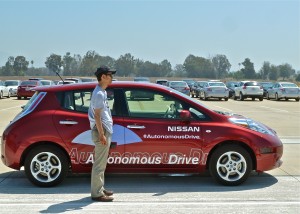
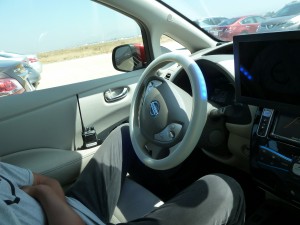
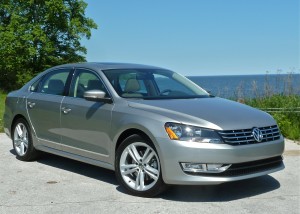
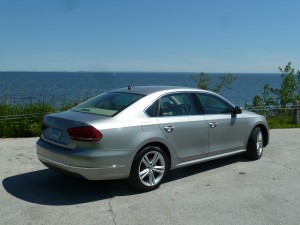
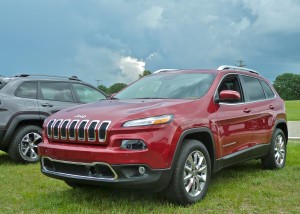
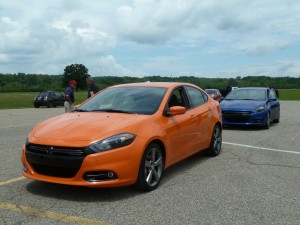
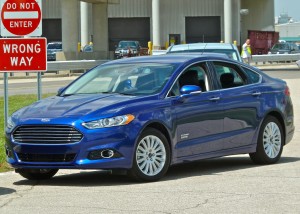
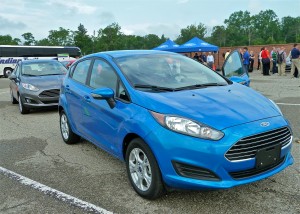
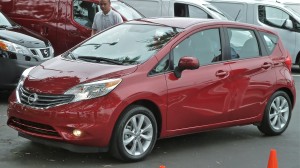
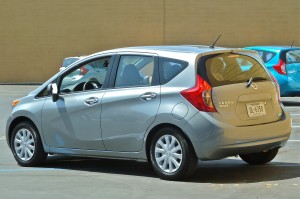
 John Gilbert is a lifetime Minnesotan and career journalist, specializing in cars and sports during and since spending 30 years at the Minneapolis Tribune, now the Star Tribune. More recently, he has continued translating the high-tech world of autos and sharing his passionate insights as a freelance writer/photographer/broadcaster. A member of the prestigious North American Car and Truck of the Year jury since 1993. John can be heard Monday-Friday from 9-11am on 610 KDAL(www.kdal610.com) on the "John Gilbert Show," and writes a column in the Duluth Reader.
John Gilbert is a lifetime Minnesotan and career journalist, specializing in cars and sports during and since spending 30 years at the Minneapolis Tribune, now the Star Tribune. More recently, he has continued translating the high-tech world of autos and sharing his passionate insights as a freelance writer/photographer/broadcaster. A member of the prestigious North American Car and Truck of the Year jury since 1993. John can be heard Monday-Friday from 9-11am on 610 KDAL(www.kdal610.com) on the "John Gilbert Show," and writes a column in the Duluth Reader.